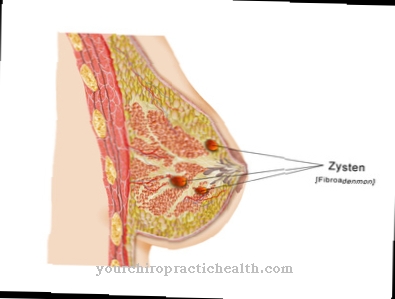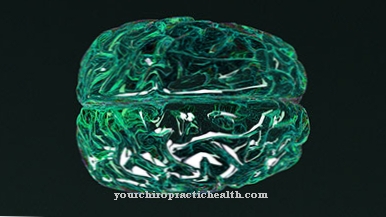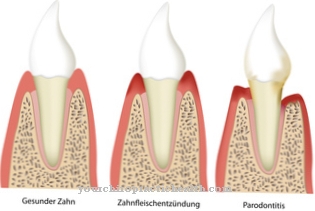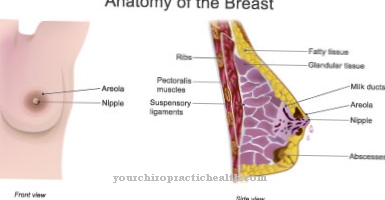With the Polar body diagnostics maternal hereditary diseases are recognized in the context of artificial insemination. Polar body diagnostic examinations take place before the egg cell is fertilized. The rejection of the unfertilized cell is morally superior to the rejection of an actual embryo.
What is polar body diagnosis?

Polar body diagnosis is a method of prefertilization diagnosis. The term prefertilization diagnostics describes genetic testing methods which, during artificial insemination, are intended to detect genetic defects before the egg cell is fertilized. In polar body diagnostics, individual elements of the egg cell removed are examined for defects before the zygote is formed.
A distinction must be made between the methods of pre-fertility diagnosis and the molecular genetic examinations of pre-implantation diagnosis. After in vitro fertilization has already taken place, these procedures decide whether an embryo is to be implanted in the uterus. As ethical questions arise in this context, pre-implantation diagnosis is not permitted in all countries. In Austria, for example, pre-implantation diagnostic examinations are prohibited. Prefertilization diagnostics and polar body diagnostics are still permitted, since no actual embryos are discarded in the event of findings.
Function, effect & goals
In-vitro fertilization offers couples with fertility disorders and an unfulfilled desire to have children the opportunity to conceive. Products from in vitro fertilization are also known as embryos in a jar. In this process, the egg cell is fertilized outside the female body and, after fertilization, implanted in the uterus. In order to rule out genetic defects before fertilization, polar bodies are removed from both the maternal and paternal material.
The polar bodies are formed in meiosis. They adhere to the egg cell, contain little cytoplasm and are equipped with a simple set of chromosomes. Polar body diagnostics in the context of in vitro fertilization includes not only the removal, but also the human genetic examination of the polar bodies. In this way, genetic defects can be detected and the egg cell can be discarded before fertilization if there are abnormal findings. The main reason why the procedure is carried out before the maternal and paternal material is merged is that the diagnosis on the already fertilized egg cell was originally not permitted for ethical reasons.
Using polar body diagnostics, for example, incorrect distributions of the chromosome set can be identified before fertilization. Chromosome mutations such as translocations can also be identified through the examination. In addition, within the framework of polar body diagnostics, it is possible to demonstrate segregation of monogenetic diseases passed on from the mother, which is provided by the so-called polymerase chain reaction. This method is a method of in vitro replication of genetic material. If the polar body diagnostic tests show no abnormalities, the first cell division is awaited. This creates an embryo which, if the findings are normal, is transplanted into the mother's uterus.
If instead of abnormal findings, the egg cell can be discarded before an embryo actually develops. The examination carried out on the chromosome set is particularly relevant in older women because of the age-related increased risk in order to rule out aneuploidies such as trisomy 21. In addition, the polar body diagnosis enables the detection of maternal hereditary diseases of the dominant and X-linked form in the mendelian inheritance. However, paternal disease factors cannot be fully detected by polar body diagnostic examinations.
Thus, polar body diagnostics cannot reliably exclude genetic defects. In the pre-implantation diagnosis, however, paternal hereditary diseases can also be identified, so that the pre-implantation diagnosis methods are superior to the polar body diagnosis in this respect. The rejection of an already fertilized egg cell, as it has to be for preimplantation diagnosis, is considered by many people to be ethically irresponsible.
Risks, side effects & dangers
For the field of fertilization medicine, ethical questions are of great relevance. State guidelines set the framework in which fertilization is considered responsible. In Germany this framework is also known as the Embryo Protection Act. Due to the introduction of the Protection Act, pre-implantation diagnosis was only permitted to a limited extent for a long time, as it was associated with the rejection of actual embryos and thus disregarded the Embryo Protection Act.
For this reason, prefertilization and polar body diagnostics were promoted in Germany. Since 2011, however, pre-implantation diagnostics have been approved throughout Germany for corresponding indications. Scientifically, pre-implantation diagnostic methods are superior to polar body diagnostics, so that polar body diagnostic examinations have only been used to a limited extent since 2011. Neither one nor the other procedure is associated with physical risks and side effects for the mother or father. However, the result of both diagnostics can confront a couple with psychological stress in family planning. Therefore, the couples should go to the examinations with a constitution that is as stable as possible.
If the findings are conspicuous, the question arises as to whether the mother and father want the egg cell to be rejected at all. In the past, unsuccessful fertilizations have often strained relationships and in individual cases even ended them. The same applies to complications during fertilization, such as those that can occur with hereditary diseases and that may come to light through polar body diagnostics. Couples should therefore be aware in advance of how stressful the diagnosis can have on their relationship. Indications for a polar body diagnostic examination can be known hereditary diseases in the family. The mother's age can also be a reason for polar body diagnostics, as the risk of mutations increases after a certain age.







.jpg)







.jpg)



.jpg)







